03/02/2017
COLUMNS
HEALTH/WELLNESS
A Celiac Vaccine?
Nexvax2 makes progress
FOOD/LIFESTYLE
Burden of the Gluten-Free Diet
NEWS/UPDATES
Note from Alice: Cheating, Nightmares and the Gluten-Free Diet

We recently asked our Facebook followers if they ever cheated on the gluten-free diet. On the surface, the results weren’t so surprising: some cheat every once in a while when the temptation is too great and others would never even consider cheating. But whether they cheated or not, multiple people confessed that gluten and the gluten-free diet often show up as key players in their dreams (and nightmares).
Two kinds of gluten dreams seemed most popular. In the first, the person unknowingly consumes gluten or worries that something they already ate may have contained gluten. In the second, the person gluttonously chows down on all types of gluten-filled foods, with pizza, doughnuts and bread making frequent appearances. Although the specific content of each gluten dream is unique to the individual, the fact that so many of us with celiac disease unconsciously deal with the gluten-free diet shows its strong hold over our lives.
While I haven’t had these particular dreams, I’m not at all shocked that others do, given how sources of anxiety, concern and fear from our waking lives can appear while we sleep. As many of us well know, the psychological impacts of celiac disease are just as real and just as serious as the physical impacts. It seems clear to me that the near impossibility of remaining 100% gluten-free and the constant vigilance required to manage the diet are major contributors to these nighttime terrors. To me, these dreams say so much about how people really feel about the gluten-free diet. Since we have no other choice, we have accepted celiac disease and its treatment as our new normal. It can’t erase, however, the underlying fear of food and the control that our disease has over our lives. After all, every single aspect of our lives must be planned around if and how we can get our next safe meal.
So what can we learn from these dreams about forbidden foods? And will there be a time celiac disease patients can get some shuteye without a slice of pizza haunting them?
It’s my hope and belief that a day will come when the celiac disease community will no longer have to face the challenges of today, will no longer have to live in fear of food. Research shows us that the gluten-free diet is not enough to properly treat celiac disease. That’s why Beyond Celiac works with researchers, doctors and pharmaceutical companies searching for alternative treatments and therapies that go beyond the diet. You can help us get there by choosing to be an active participant in the community. The closer we get to these treatments, and eventually to a cure, the closer we also get to sweet dreams and peaceful slumber.
To living life Beyond Celiac,
Alice Bast
Beyond Celiac CEO
Cooking with Oonagh
Irish Stew
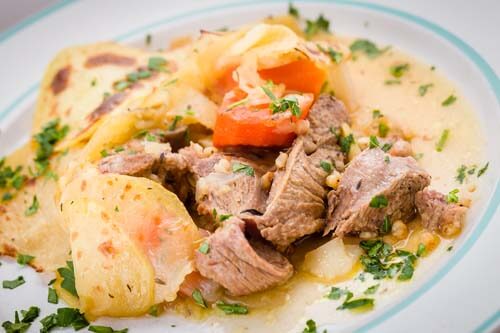 This recipe is what I used to make in England, except that in England I would use neck of lamb and then remove the bones. I have made this with shoulder lamb chops, which have far too much fat and not enough meat, but not a cheap cut. This is far better made with leg of lamb, cubed, or lamb shanks. On my cousins’ farm in Ireland, this would taste quite different from supermarket ingredients. Get the recipe.
This recipe is what I used to make in England, except that in England I would use neck of lamb and then remove the bones. I have made this with shoulder lamb chops, which have far too much fat and not enough meat, but not a cheap cut. This is far better made with leg of lamb, cubed, or lamb shanks. On my cousins’ farm in Ireland, this would taste quite different from supermarket ingredients. Get the recipe.
Irish Cream White Chocolate Cheesecake
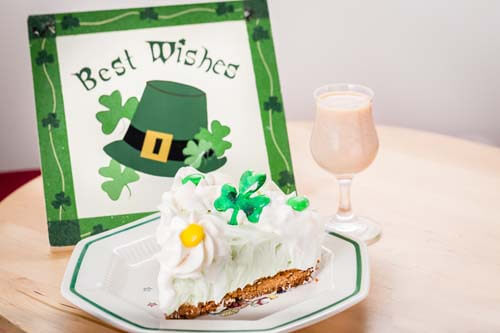 This is not a baked custard cheesecake. It is a gelatin-set cheesecake that I first made in England and continue to make. Apart from the crust, there is no baking, no worrying if you’ve overcooked the custard, no cracking of cheesecake, no overnight cooling, etc. It’s very popular with my students and clients, and you can vary it with different chocolates and liqueurs. Get the recipe.
This is not a baked custard cheesecake. It is a gelatin-set cheesecake that I first made in England and continue to make. Apart from the crust, there is no baking, no worrying if you’ve overcooked the custard, no cracking of cheesecake, no overnight cooling, etc. It’s very popular with my students and clients, and you can vary it with different chocolates and liqueurs. Get the recipe.
About Chef Oonagh Williams
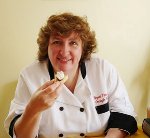 Check the archives for more of Chef Oonagh’s St. Patrick’s Day recipes, like Corned Beef in Gluten-Free Beer, Irish Chicken Rolls, Sticky Toffee Puddings and Soda Bread. Watch Chef Oonagh on NH’s ABC WMUR Cooks Corner on Friday, March 17 for St. Patrick’s Day. The clip will also will be posted on Gluten Free Cooking with Oonagh on Facebook.
Check the archives for more of Chef Oonagh’s St. Patrick’s Day recipes, like Corned Beef in Gluten-Free Beer, Irish Chicken Rolls, Sticky Toffee Puddings and Soda Bread. Watch Chef Oonagh on NH’s ABC WMUR Cooks Corner on Friday, March 17 for St. Patrick’s Day. The clip will also will be posted on Gluten Free Cooking with Oonagh on Facebook.
Chef Oonagh will be teaching a six-hour demystifying gluten-free baking class on Monday, March 20 at Southern Maine Community College. The class is open to all and includes demos, hands-on learning and lectures. You can eat everything we make. Get more details at Gluten Free Cooking with Oonagh. Chef Oonagh will be the only ‘food’ speaker on the stage with a demo and talk at the all-day Boston Celiac Disease Symposium on Saturday, April 1. Other speakers include top celiac disease doctors from Beth Israel Deaconess Medical Center, the Center for Celiac Research at Massachusetts General Hospital and Harvard Medical School. Find out more here.
Contact Chef Oonagh at [email protected] to speak at conferences or to arrange other classes.
A Vaccine to Treat Celiac Disease Gets Closer
By Amy Ratner, Beyond Celiac Science and Medical News Analyst
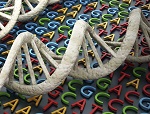 Researchers working on a vaccine to protect celiac disease patients from gluten exposure got a better idea in a recent clinical trial of the doses that will be needed, clearing the way for the drug to move to the next stage of study.
Researchers working on a vaccine to protect celiac disease patients from gluten exposure got a better idea in a recent clinical trial of the doses that will be needed, clearing the way for the drug to move to the next stage of study.
ImmusanT, a Massachusetts biotechnology company developing Nexvax2®, reported that a just-concluded Phase 1b trial tested the safety and tolerability of the therapeutic vaccine at various doses, from an initial injection through a series of booster shots.
Nexvax2 is a form of immunotherapy, a promising approach to celiac disease that uses the body’s own immune system to treat or prevent disease.
Building resistance
The premise behind Nexvax2 is that if a small amount of the vaccine is given at first and the amount gradually increased, the immune system of those who have celiac disease and the gene most commonly associated with it, HLA-DQ2.5, will build up resistance to the harmful protein in gluten without any negative effects.
Relationship Status Update: Exploring the connection between celiac disease and the gluten-free diet
By Amy Ratner, Beyond Celiac Science and Medical News Analyst
 We’re looking at the complicated connection you can have with the gluten-free diet when you have celiac disease.
We’re looking at the complicated connection you can have with the gluten-free diet when you have celiac disease.
First, you need the diet, you depend on the diet, you very likely trust the safety of the diet. It’s your best friend and supports you in a return to good health, taking away pain, fatigue, nutritional deficiencies and more. But it’s a demanding partner as well. You have to constantly tend to it and meet its needs. The diet can hold you back socially. It may even bring a new kind of depression because you often feel different and isolated from the joy of sharing food and the events that revolve around it. Read more.
A Broad View of Celiac Disease, Part 1
By Amy Ratner, Beyond Celiac Science and Medical News Analyst
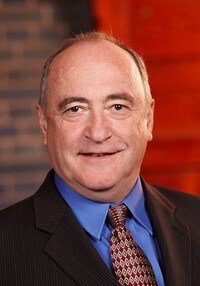 It’s the late 1980s. A young doctor comes to the United States from Ireland, where celiac disease is commonly diagnosed, and is told that there are no patients with celiac disease here.
It’s the late 1980s. A young doctor comes to the United States from Ireland, where celiac disease is commonly diagnosed, and is told that there are no patients with celiac disease here.
But the 35 years since have proven what he suspected all along – that patients with celiac disease were just being overlooked, and he could help them.
That’s the back story of Ciarán Kelly, a Boston-based physician and researcher, who recently joined the Beyond Celiac Board of Directors.
About 12 years ago, he opened the Celiac Center at Beth Israel Deaconess Medical Center (BIDMC), where he remains the director. More than 2,500 patients have been treated there for the genetic autoimmune disease in which the gluten protein in wheat, barley and rye triggers the body to attack itself. In 2013, it was one of three Boston celiac centers that joined forces to create the Harvard Medical School Celiac Research Program. Read more.
Allergic Living Sneak Peek: The Burden of a Gluten-Free Diet
By Lisa Fitterman
 At first, Emma Clerx was happy to learn that the uncomfortable gastrointestinal symptoms she had suffered for the last 10 years were due to an autoimmune condition called celiac disease. It was November 2008. She Was 12 years old at the time – adolescent in Seekonk, Mass., who wanted to fit in with her peers.
At first, Emma Clerx was happy to learn that the uncomfortable gastrointestinal symptoms she had suffered for the last 10 years were due to an autoimmune condition called celiac disease. It was November 2008. She Was 12 years old at the time – adolescent in Seekonk, Mass., who wanted to fit in with her peers.
“At least I don’t have to take any medications,” she recalls thinking. “All I have to do is change my diet.”
Back then, it sounded simple. Stop consuming gluten, a protein in wheat, barley and rye products, and she’d get better. Her GI doctor explained that whenever her immune system detected the protein’s presence, it went on the attack, damaging the villi – tiny, hair-like projections that line her small intestine and act as gate-keepers for nutrients to enter the rest of her body. Read more.
What You Should Know Before Drinking Gluten-Free Beers and Other Alcoholic Drinks
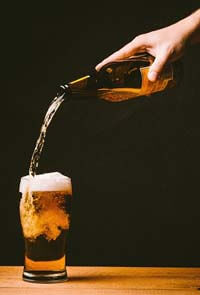 St. Patrick’s Day is right around the corner! For many of you, that could mean enjoying some gluten-free beer to celebrate the occasion. Here are important facts that you should know about gluten-free beers and other alcohol before you head out:
St. Patrick’s Day is right around the corner! For many of you, that could mean enjoying some gluten-free beer to celebrate the occasion. Here are important facts that you should know about gluten-free beers and other alcohol before you head out:
- We don’t know yet if “gluten-removed” barley-based beers are safe for people with celiac disease. That’s because the testing method used has not yet been validated. Until we know more, Beyond Celiac advises avoiding barley-based beers. Luckily, there are plenty of safe gluten-free beers on the market! Get more information on “gluten-removed” beer here.
- Most liquors are safe for people with celiac disease. Pure, distilled liquors, regardless of their starting ingredients (including those made with wheat, barley or rye), are considered gluten-free. Be on the lookout for hidden gluten in liquors that use flavorings added after distillation.
- Food coloring used to make green alcohol for St. Patrick’s Day should be free from gluten-containing ingredients. Be sure to ask your bartender about ingredients before drinking.
- Wine is gluten-free. Enjoy!
For more information on alcohol labeling, download and watch the Beyond Celiac webinar featuring Tricia Thompson, MS, RD, “It’s Not Just Food Anymore: An Update on Gluten-Free Alcoholic Beverage Labeling.”
Resource Spotlight: Getting Started Guide
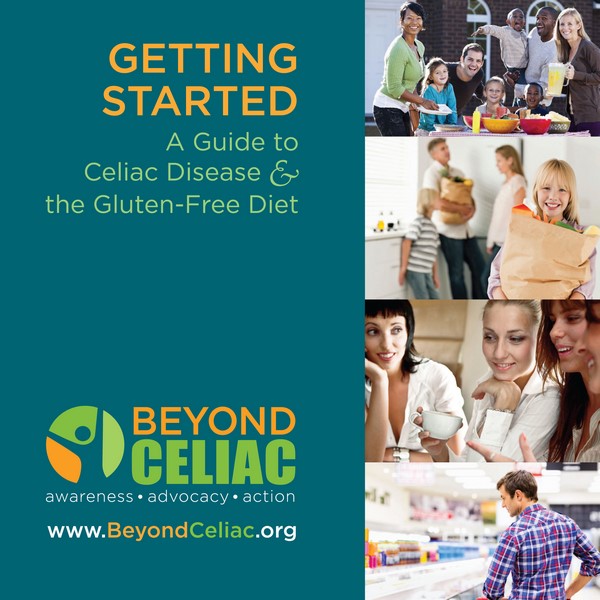 New to the gluten-free diet? Want to brush up on your familiarity with celiac disease and how to eat gluten-free? Getting Started: A Guide to Celiac Disease and the Gluten-Free Diet, is a comprehensive resource from Beyond Celiac. This new and improved version of the Getting Started Guide contains information and resources for both those newly diagnosed with celiac disease or non-celiac gluten sensitivity (‘gluten sensitivity’) and those looking to better manage their gluten-free diet. Here’s a snapshot of what you’ll find inside:
New to the gluten-free diet? Want to brush up on your familiarity with celiac disease and how to eat gluten-free? Getting Started: A Guide to Celiac Disease and the Gluten-Free Diet, is a comprehensive resource from Beyond Celiac. This new and improved version of the Getting Started Guide contains information and resources for both those newly diagnosed with celiac disease or non-celiac gluten sensitivity (‘gluten sensitivity’) and those looking to better manage their gluten-free diet. Here’s a snapshot of what you’ll find inside:
- Gluten-free diet 101
- FODMAPs
- Specialty gluten-free manufacturers
- Gluten-free food labeling
- Gluten-free certification
- Guidelines for dining out
- National medical centers
Download the Getting Started Guide here!
What’s Hot
In the Headlines:








